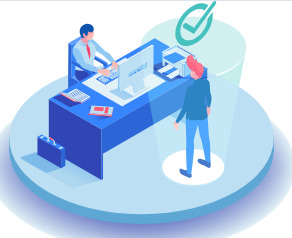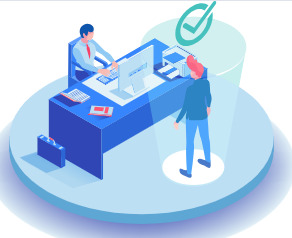Since 2015, NameScan has provided a contractless, Pay‑As‑You‑Go risk management solution with a variety of AML/CTF and KYC/KYB screening options, enabling organisations with lower screening volumes to comply with regulatory obligations and manage their reputational risk.
Don't wanna be here? Send us removal request.
Text

AML/CTF Rules in Australia | NameScan
#AML/CTF Rules in Australia#aml/ctf compliance#tranche 2 aml for tcsps#aml checks for legal industry#aml ctf rules for lawyers
0 notes
Text

AML/CTF ACT | NameScan
#AML/CTF ACT#aml/ctf compliance#tranche 2 aml for tcsps#aml/ctf rules in australia#aml checks for legal industry
0 notes
Text
AML Tranche 2 for Accountants: What You Must Know Now
As the Australian government moves closer to implementing AML Tranche 2 reforms, accountants across the country are facing a new regulatory landscape. These changes are not just compliance requirements—they are critical measures aimed at strengthening Australia’s financial system against money laundering and terrorism financing.
In this blog, we’ll explore what AML Tranche 2 means for accountants, why it matters, and how to prepare. With practical steps, compliance tips, and solutions from NameScan, this guide will help you stay ahead of the curve.
What is AML Tranche 2?
AML Tranche 2 refers to the proposed expansion of the Anti-Money Laundering and Counter-Terrorism Financing (AML/CTF) Act to cover high-risk sectors such as lawyers, accountants, real estate agents, and trust and company service providers (TCSPs).
Currently, Australia’s AML/CTF laws primarily apply to the financial services sector. However, under pressure from international bodies like the Financial Action Task Force (FATF), Australia is taking steps to broaden its AML/CTF coverage—hence, the introduction of Tranche 2.
Once implemented, accountants will be required to adopt full AML/CTF compliance programs, including customer due diligence (CDD), transaction monitoring, suspicious matter reporting, and recordkeeping.
Why AML Tranche 2 Matters for Accountants
Accountants often handle large financial transactions, corporate structuring, and tax matters—areas that are susceptible to abuse by criminals seeking to launder illicit funds. AML Tranche 2 aims to ensure that accountants are no longer an unregulated entry point into the financial system.
Key Risk Areas for Accountants:
Assisting clients with company formation
Managing trust accounts
Providing tax or financial advice involving large transactions
Handling international transfers
Failing to address these risks could expose accountants to legal penalties and reputational damage.
What Will Change Under AML Tranche 2?
Once AML Tranche 2 is enacted, accountants will face several new compliance obligations, including:
1. Customer Due Diligence (CDD)
Accountants must verify client identity, assess the purpose and intended nature of the business relationship, and understand the source of client funds.
2. Ongoing Monitoring
You’ll need to implement systems to continuously monitor business relationships and transactions for unusual or suspicious activity.
3. Suspicious Matter Reporting (SMR)
Any activity suspected to be linked to money laundering or terrorism financing must be reported to AUSTRAC immediately.
4. AML/CTF Program Implementation
You’ll need to develop and maintain an AML/CTF compliance program, including risk assessments, policies, procedures, and staff training.
5. Recordkeeping
Keep detailed records of client identification, transactions, and AML procedures for at least seven years.
How Accountants Can Prepare for AML Tranche 2
With the introduction of AML Tranche 2 on the horizon, accountants must start preparing now to ensure compliance and avoid regulatory penalties.
Step 1: Conduct a Risk Assessment
Understand the specific money laundering risks associated with your services and clients. Assess which services might be vulnerable and design risk mitigation strategies.
Step 2: Develop an AML/CTF Program
Create a comprehensive AML/CTF program tailored to your accounting practice. This should include internal controls, employee training, and independent reviews.
Step 3: Implement Identity Verification Systems
Use reliable Know Your Customer (KYC) tools to verify client identities efficiently. Automating this process reduces human error and speeds up onboarding.
Step 4: Leverage AML Screening Tools
Tools like NameScan provide real-time screening against global watchlists, sanctions lists, and Politically Exposed Persons (PEPs) databases. This is vital for identifying high-risk clients and transactions.
Step 5: Stay Informed and Educate Staff
Regular training ensures your team understands AML obligations and how to spot red flags. Keep up with guidance from AUSTRAC and the accounting industry.

Why Use NameScan for AML Compliance?
NameScanoffers a suite of powerful and cost-effective tools designed to help accountants meet AML/CTF obligations with ease:
PEP & Sanction Screening Instantly screen clients against global watchlists and identify politically exposed persons.
Ongoing Monitoring Get real-time alerts when client risk status changes.
Adverse Media Checks Monitor clients for negative news or risk indicators that may not appear on official watchlists.
Risk Assessment Reports Generate clear reports that support your compliance documentation.
With automated workflows and advanced risk detection, NameScan helps streamline your AML processes, reduce manual effort, and ensure your practice remains compliant under Tranche 2.
Explore NameScan's AML solutions for accountants
Semantic SEO Keywords Naturally Included:
AML Tranche 2 for Accountants
AML/CTF compliance for accountants
Know Your Customer for accountants
AML risk assessment accounting firms
PEP and Sanctions screening
AML software for accountants
AUSTRAC reporting for accountants
Frequently Asked Questions (FAQ)
Q1: When will AML Tranche 2 be implemented in Australia?
The government has announced its commitment to implementing AML Tranche 2, with legislation expected soon. However, no exact date has been set. Accountants are advised to begin preparations now.
Q2: Are all accountants affected by AML Tranche 2?
Only those providing services that may involve financial transactions, such as managing client funds, setting up companies, or offering tax planning, will fall under the scope.
Q3: What happens if I don’t comply with AML/CTF obligations?
Non-compliance may result in significant penalties, legal action, and reputational harm. It could also put your clients and business at risk of being exploited for money laundering.
Q4: Can small accounting firms manage AML compliance affordably?
Yes. Tools like NameScan are scalable and affordable, offering tailored solutions for small to medium accounting practices.
Q5: Where can I find guidance on AML Tranche 2 requirements?
Refer to AUSTRAC’s official website for regulatory updates and guidelines. You can also explore educational resources provided by industry bodies and compliance platforms like NameScan.
Final Thoughts
The introduction of AML Tranche 2 for Accountants marks a significant shift in regulatory responsibilities. While the new obligations may seem daunting, they are a necessary step in protecting Australia’s financial integrity. By preparing now and leveraging digital compliance tools like NameScan, accountants can ensure smooth adoption, reduce risk, and build client trust.
✅ Ready to Future-Proof Your Accounting Practice?
Let NameScan help you stay compliant, secure, and efficient. 👉 Start your AML compliance journey with NameScan today
#AML Tranche 2 for Accountants#tranche 2 aml for tcsps#aml/ctf act#aml checks for legal industry#aml/ctf rules in australia
0 notes
Text

AML/CTF Tranche 2 for Real Estate | NameScan
Discover how Australia's Tranche 2 AML/CTF reforms impact real estate agents, introducing new compliance requirements to combat financial crime.
#aml checks for legal industry#aml/ctf rules in australia#tranche 2 aml for tcsps#aml/ctf act#AML/CTF Tranche 2 for Real Estate
0 notes
Text

AML CTF ACT Tranche 2 for Precious Metal Dealers | NameScan
#AML CTF ACT Tranche 2 for Precious Metal Dealers#AML CTF Rules for Lawyers#tranche 2 aml for tcsps#aml/ctf compliance#aml/ctf act
0 notes
Text

AML Tranche 2 for Accountants | NameScan
#AML Tranche 2 for Accountants#aml/ctf compliance#tranche 2 aml for tcsps#aml checks for legal industry#aml ctf rules for lawyers
0 notes
Text

Tranche 2 AML for TCSPS | NameScan
#Tranche 2 AML for TCSPS#aml/ctf compliance#aml checks for legal industry#aml ctf rules for lawyers#aml/ctf rules in australia
1 note
·
View note
Text

AML Tranche 2 for Accountants | NameScan
#AML Tranche 2 for Accountants#tranche 2#aml/ctf compliance#tranche 2 aml for tcsps#aml/ctf rules in australia
0 notes
Text

AML CTF ACT Tranche 2 for Precious Metal Dealers | NameScan
#AML CTF ACT Tranche 2 for Precious Metal Dealers#aml/ctf compliance#tranche 2 aml for tcsps#aml/ctf act#tranche 2
0 notes
Text

AML/CTF ACT | NameScan
0 notes
Text

AML/CTF Rules in Australia | NameScan
0 notes
Text
AML Checks for Legal Industry: What You Must Know
The legal industry plays a crucial role in upholding justice and ethics, but it also faces growing pressure to comply with Anti-Money Laundering (AML) regulations. With increasing scrutiny from regulators and rising financial crime risks, law firms and legal professionals must understand the importance of robust AML checks.
In this article, we explore the critical role of AML Checks for Legal Industry, common compliance challenges, and practical steps for legal professionals to meet their obligations.
Why AML Checks Matter in the Legal Sector
Legal professionals are often gatekeepers to financial and property transactions. This puts them at risk of being exploited by criminals seeking to launder illicit funds. AML checks for the legal industry are designed to detect suspicious activities, verify client identities, and prevent law firms from becoming unwitting facilitators of money laundering.
Jurisdictions around the world, including the UK, Australia, and the US, have updated AML legislation requiring law firms to implement customer due diligence (CDD), enhanced due diligence (EDD), and transaction monitoring procedures.
Key AML Obligations for Legal Professionals
To remain compliant, legal practitioners must fulfill several AML requirements, including:
1. Customer Due Diligence (CDD)
CDD involves verifying a client's identity before forming a business relationship. This includes checking official documents, understanding the nature of the client's activities, and assessing risk levels.
2. Enhanced Due Diligence (EDD)
For high-risk clients or politically exposed persons (PEPs), legal professionals must conduct EDD. This includes deeper investigations into the source of funds and ongoing monitoring.
3. Ongoing Monitoring
AML checks in the legal industry don’t end after onboarding a client. Firms must monitor transactions and activities throughout the client relationship to detect unusual patterns.
4. Suspicious Activity Reporting (SAR)
If a legal professional suspects that a client may be engaged in money laundering, they are required to submit a SAR to the appropriate authority.

Common Challenges in AML Compliance for Law Firms
Despite best intentions, many law firms struggle with AML compliance. Here are some common hurdles:
Manual verification processes that are time-consuming and prone to error
Lack of training on AML regulations and red flags
Limited resources in smaller firms to implement robust AML frameworks
Difficulty in identifying UBOs (Ultimate Beneficial Owners) in complex corporate structures
Keeping up with regulatory changes, especially in global practices
Failing to address these challenges can lead to severe penalties, reputational damage, and even legal consequences.
Practical AML Solutions for Legal Industry Professionals
To manage compliance effectively, law firms should adopt a structured and technology-driven approach. Here are actionable steps:
1. Automate AML Screening
Using automated AML screening tools like NameScan allows law firms to conduct instant checks against global sanctions lists, watchlists, and PEP databases. This reduces human error and speeds up the process.
2. Implement Risk-Based Assessment Models
Every client poses a different level of risk. By classifying clients based on risk factors—such as jurisdiction, transaction type, and business nature—firms can apply proportionate due diligence efforts.
3. Ongoing Training and Awareness
Regular AML training for lawyers and support staff ensures the entire team stays informed about current threats, red flags, and compliance procedures.
4. Leverage KYC and UBO Verification Services
Utilize platforms like NameScan’s KYC and UBO verification tools to simplify the process of identifying beneficial owners and verifying client identities in real-time.
5. Keep Records and Document Everything
Maintaining a record of all due diligence, risk assessments, and internal communications is essential. This documentation is critical during audits and regulatory reviews.
How NameScan Supports AML Compliance for Legal Firms
NameScan offers a suite of compliance tools tailored for the legal sector, including:
PEP and Sanction Screening: Instantly check clients against global databases.
Adverse Media Checks: Detect negative news that may indicate a client’s involvement in illegal activities.
KYC and UBO Tools: Automate the identity verification process with precision.
Ongoing Monitoring: Set up alerts for any changes in a client’s risk profile.
These tools help law firms maintain compliance while streamlining operational efficiency.
Legal Industry Compliance in Different Jurisdictions
AML checks for the legal industry vary by country, but global trends are increasingly aligning with FATF (Financial Action Task Force) recommendations. Here's a quick look:
Australia: Under AUSTRAC regulations, law firms offering financial or real estate services may be subject to Tranche 2 reforms soon.
UK: Law firms must comply with the Money Laundering Regulations 2017, including a risk-based approach.
USA: Lawyers working in certain transactions must follow guidance from the Financial Crimes Enforcement Network (FinCEN), especially when dealing with shell companies.
Staying informed about evolving regulations in each jurisdiction is critical for compliance.
FAQs: AML Checks in the Legal Industry
1. Are all law firms required to carry out AML checks? Not all, but firms involved in financial, real estate, or company formation services are usually required to perform AML checks.
2. What happens if a law firm fails to comply with AML regulations? Non-compliance can result in regulatory fines, reputational damage, or criminal charges depending on the severity.
3. How often should law firms review AML policies? Policies should be reviewed at least annually or when significant changes occur in the business or regulatory environment.
4. Can small firms afford AML compliance solutions? Yes. Platforms like NameScan offer scalable solutions designed for firms of all sizes with flexible pricing models.
5. How can technology help reduce AML compliance costs? Automation minimizes manual labor, speeds up screening, and improves accuracy—saving time and reducing operational costs.
Final Thoughts: Strengthening AML Compliance Starts Now
AML checks for the legal industry are no longer optional—they are essential. Legal professionals must be proactive, knowledgeable, and equipped with the right tools to protect their clients and reputation.
With intelligent solutions from NameScan, law firms can confidently meet regulatory expectations while staying focused on their core mission—serving justice.
Call to Action
Is your law firm ready for evolving AML compliance demands?
👉 Start your free trial with NameScan today and empower your legal practice with cutting-edge AML and KYC tools designed for efficiency, accuracy, and peace of mind.
#tranche 2 aml for tcsps#aml ctf rules#aml checks for legal industry#aml ctf rules for lawyers#aml/ctf rules in australia
0 notes
Text

Tranche 2 AML for TCSPS | NameScan
Learn how Australia's Tranche 2 AML/CTF reforms impact Trust or Company Service Providers (TCSPs). Discover new compliance requirements and their role in combating financial crime.
#tranche 2 aml for tcsps#aml/ctf act#aml checks for legal industry#aml/ctf rules in australia#tranche 2 reform
0 notes
Text

AML Checks for Legal Industry | NameScan
0 notes
Text
Tranche 2 AML for TCSPS: What You Need to Know Now
The global fight against money laundering has intensified in recent years, and regulatory bodies are expanding their reach to include previously unregulated sectors. One major shift is the introduction of Tranche 2 AML regulations targeting Trust and Company Service Providers (TCSPs). If you're operating in this space, understanding what this means for your business is critical—not just for compliance, but also for reputation and long-term growth.
In this guide, we’ll break down what Tranche 2 AML for TCSPS involves, why it matters, and how you can stay compliant without overwhelming your operations.
What Is Tranche 2 AML?
Tranche 2 AML refers to the second phase of anti-money laundering (AML) regulations being implemented in countries like Australia, New Zealand, and other regions with evolving AML regimes. While Tranche 1 primarily focused on traditional financial institutions like banks and credit unions, Tranche 2 extends the AML obligations to non-financial businesses and professions—including TCSPs, lawyers, accountants, and real estate agents.
For TCSPs, this means they are now legally obligated to implement risk-based AML/CTF (Counter-Terrorism Financing) programs, conduct customer due diligence (CDD), and report suspicious activity to regulatory authorities.
Why Are TCSPS Targeted in Tranche 2?
Trust and Company Service Providers offer services that are highly susceptible to misuse by criminals for money laundering or hiding illicit assets. These services include:
Creating shell companies
Acting as company directors or nominees
Managing trusts or acting as trustees
Providing registered office addresses
Because these services can mask the true ownership of assets, regulators are closing the loopholes by bringing TCSPs under the AML spotlight through Tranche 2.
Key AML Obligations for TCSPs Under Tranche 2
Under the new regulatory environment, TCSPs must take specific steps to ensure compliance:
1. Risk-Based AML/CTF Program
Every TCSP must design and implement a tailored AML/CTF compliance program that aligns with the risks associated with their specific services and client base.
2. Customer Due Diligence (CDD)
You must verify the identity of all clients, beneficial owners, and any other individuals involved in a transaction. This includes Politically Exposed Persons (PEPs) and Ultimate Beneficial Owners (UBOs).
3. Ongoing Monitoring
Monitoring transactions for suspicious activity is now a requirement. This includes keeping records and being able to flag red flags like unusual transaction sizes, locations, or patterns.
4. Suspicious Matter Reporting (SMR)
TCSPs must report suspicious activities to the relevant authority—such as AUSTRAC in Australia or FIUs in other jurisdictions—within a prescribed timeframe.
5. Record-Keeping
You must maintain detailed and secure records of all transactions, risk assessments, and customer identification data for a minimum period (usually 5–7 years, depending on the jurisdiction).

Common Challenges TCSPS Face With Tranche 2 Compliance
Transitioning into a regulated environment presents challenges, especially for smaller TCSPs:
Lack of expertise in AML/CTF compliance
Limited access to affordable AML solutions
Operational disruption from manual processes
Risk of non-compliance penalties
The good news? These challenges are solvable with the right approach and tools.
How NameScan Helps TCSPs Stay Compliant
At NameScan, we understand that compliance shouldn’t slow your business down. That’s why we offer a cost-effective and scalable AML compliance solution designed specifically for small to mid-sized firms, including TCSPs.
✅ Real-Time AML Screening
NameScan’s tools allow you to screen clients against global sanction lists, PEP databases, and adverse media in real-time, reducing your risk exposure.
✅ Ultimate Beneficial Owner (UBO) Identification
Our UBO verification tools help you uncover complex ownership structures so you’re not in the dark about who you’re really dealing with.
✅ Ongoing Monitoring
With our continuous monitoring service, you’ll be notified of any changes in your clients' risk status—keeping your business one step ahead.
✅ Easy Integration
No need to overhaul your tech stack. NameScan solutions are easy to integrate and adapt to your existing processes.
Practical Steps for TCSPs to Comply with Tranche 2 AML
Here's a checklist to help you navigate your AML obligations:
Conduct a Risk Assessment – Understand which services and clients pose the most AML risk.
Develop an AML Program – Build internal policies and procedures tailored to your risk level.
Implement NameScan’s AML Tools – Automate your CDD and screening processes.
Train Your Team – Ensure your staff is educated on red flags and compliance protocols.
Audit Regularly – Perform periodic internal audits to identify and correct compliance gaps.
The Future of AML Regulation for TCSPs
As regulatory pressure continues to mount, staying ahead of the curve will not only protect you from hefty penalties but also build trust with clients and regulators alike. Tranche 2 is just the beginning—many jurisdictions are already exploring Tranche 3 and beyond.
By investing in automated, reliable AML solutions like NameScan, TCSPs can transform compliance from a burden into a competitive advantage.
FAQ: Tranche 2 AML for TCSPs
What are TCSPs?
TCSPs (Trust and Company Service Providers) offer services such as forming companies, acting as trustees, and managing business entities.
What is Tranche 2 AML?
Tranche 2 AML regulations expand anti-money laundering obligations to non-financial businesses, including TCSPs, lawyers, and accountants.
When will Tranche 2 be enforced in Australia?
Legislation is expected to be enacted in late 2024 or early 2025. Businesses are encouraged to prepare now.
Do all TCSPs need AML compliance programs?
Yes. Under Tranche 2, all TCSPs are legally required to implement AML/CTF programs, conduct CDD, and report suspicious activities.
How can NameScan help with compliance?
NameScan provides AML screening, UBO identification, and ongoing monitoring tools that are easy to implement and cost-effective for TCSPs.
Stay Ahead of Compliance with NameScan
Navigating Tranche 2 AML for TCSPS doesn’t have to be overwhelming. With the right tools, training, and support, your business can not only meet but exceed regulatory expectations.
👉 Ready to simplify AML compliance? Try NameScan today and take the stress out of staying compliant.
#tranche 2 aml for tcsps#aml/ctf act#aml checks for legal industry#aml/ctf rules in australia#tranche 2 reform
0 notes
Text

AML Checks for Legal Industry | NameScan
AML/CTF solutions tailored for the legal industry. Ensure compliance, reduce risks and meet regulatory obligations with NameScan's powerful AML Risk Management Solution.
#tranche 2 aml for tcsps#aml/ctf compliance#aml/ctf act#aml checks for legal industry#aml/ctf rules in australia
0 notes
Text

AML/CTF Rules in Australia | NameScan
0 notes